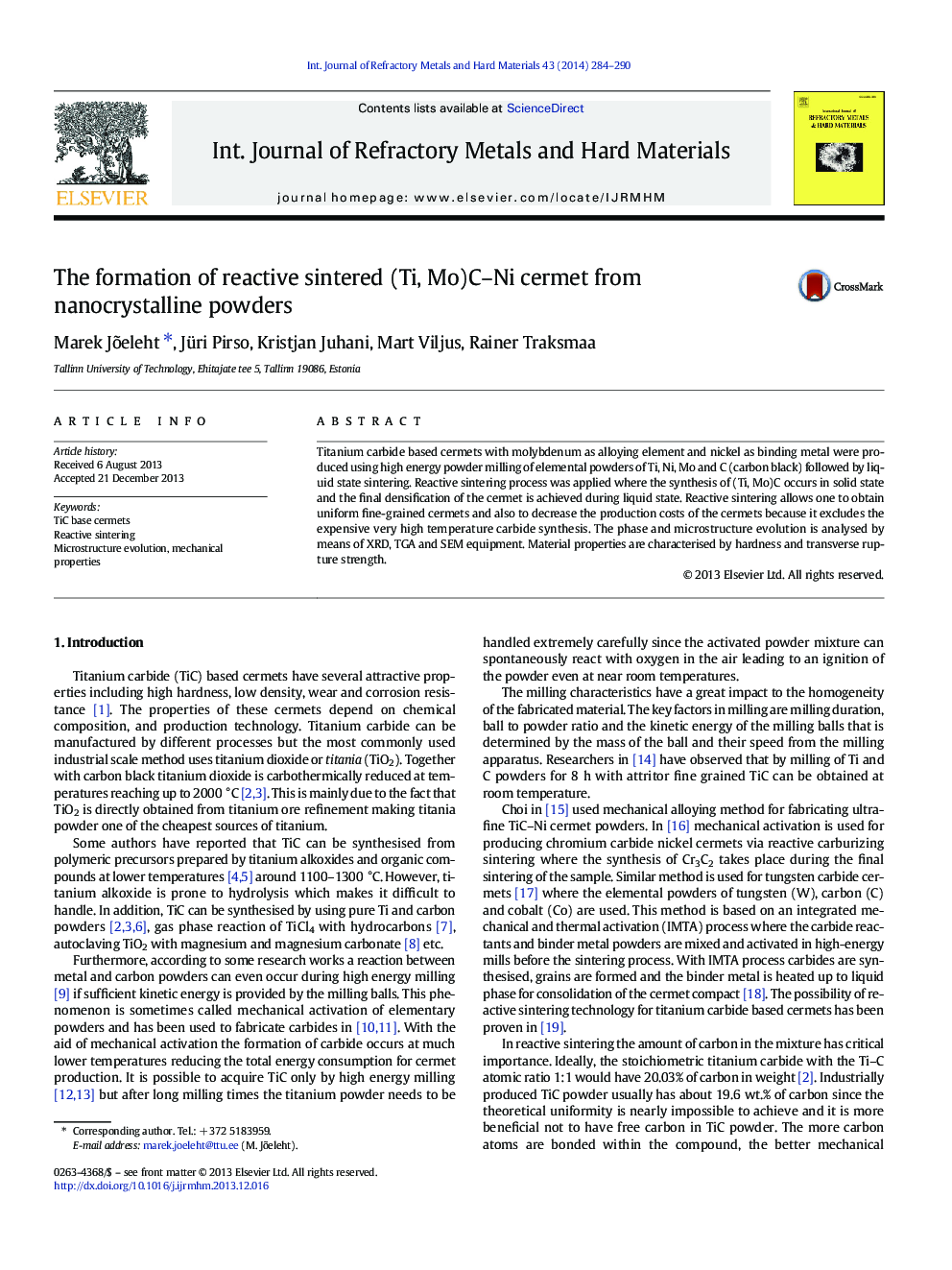| Article ID | Journal | Published Year | Pages | File Type |
|---|---|---|---|---|
| 1603265 | International Journal of Refractory Metals and Hard Materials | 2014 | 7 Pages |
•Reactive sintered (Ti, Mo)C–Ni cermets were produced.•Carbide formation occurs in three steps.•The final microstructure of the cermet has two phases.•A two step sintering is required for reactive sintering.
Titanium carbide based cermets with molybdenum as alloying element and nickel as binding metal were produced using high energy powder milling of elemental powders of Ti, Ni, Mo and C (carbon black) followed by liquid state sintering. Reactive sintering process was applied where the synthesis of (Ti, Mo)C occurs in solid state and the final densification of the cermet is achieved during liquid state. Reactive sintering allows one to obtain uniform fine-grained cermets and also to decrease the production costs of the cermets because it excludes the expensive very high temperature carbide synthesis. The phase and microstructure evolution is analysed by means of XRD, TGA and SEM equipment. Material properties are characterised by hardness and transverse rupture strength.
